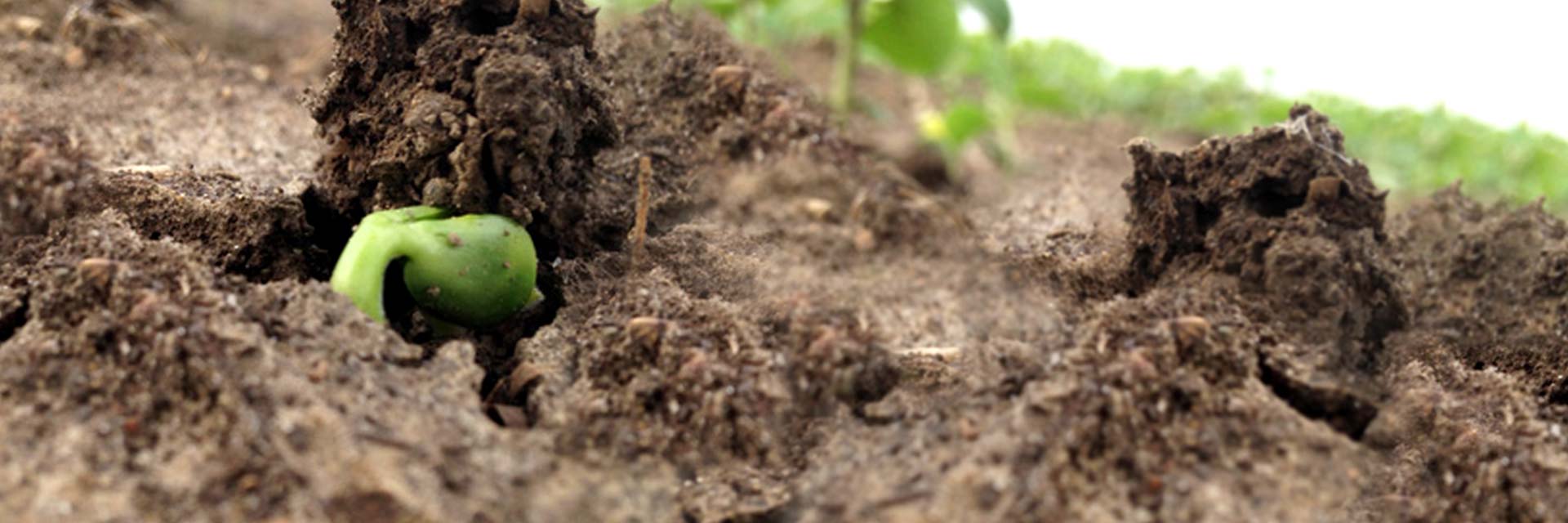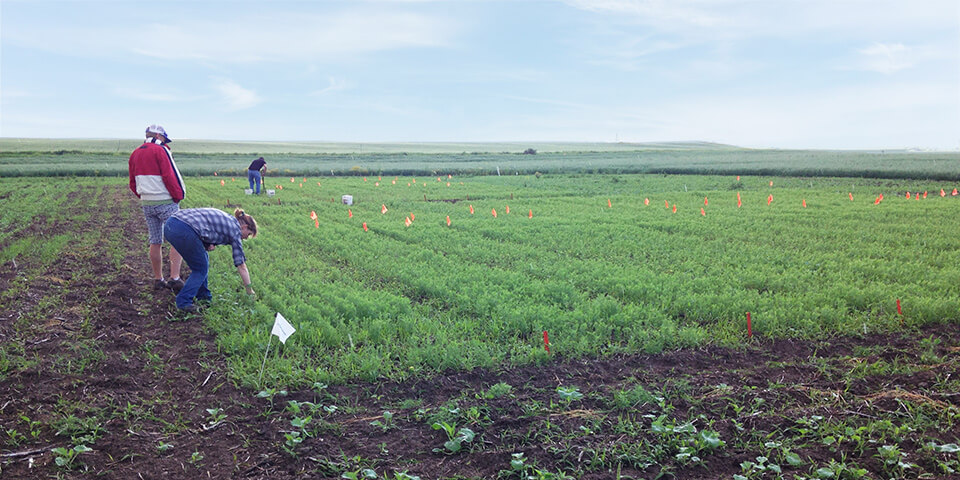
Why think about soil biology?
- Reach more nutrients & water
- Ensure an early P uptake
- Increase your yield potential

Why think about soil biology?
Did you know? Many crop practices (tillage, fallow land, flooding and crop rotation) contribute to decreasing the beneficial biology, such as mycorrhizal fungi population, in your agricultural soils. For example, it is well known that crops following Brassicaceae plants (canola and mustard), in a rotation generally tend to demonstrate reduced yield, compared to results when seeded after another crop.
Why? It can largely be explained by the relationship (or lack of relationship) between Brassicaceae and beneficial microorganisms, such as mycorrhizae1. Canola roots exude a toxic compound that reduces populations of those beneficial microorganisms in the soil. Furthermore, the “absence of a mycorrhizal host plant during the fallow period decreases mycorrhizal colonization potential for the succeeding crop and results in P deficiency symptoms in plants that are mycorrhizal dependent, such as corn, soybean, sunflower, and cotton.” 2
Did you know? Sufficient nutrient & water uptake is critical for effective plant growth and ultimately to maximize your yield potential, especially for low mobility nutrients such as P and Zn3. For an increased nutrient access, the plant needs to expand its root system to reach more soil.
What can you do? By adding mycorrhizal inoculant, the plant develops a secondary root system (mycorrhizal hyphae) allowing it a larger soil contact surface and thus better access to nutrients and water. The mycorrhizal network (see picture below) reaches a larger volume of soil that the plant root doesn’t reach without mycorrhizae. “The absorptive area of mycorrhizal hyphae is approximately 10 times more efficient than that of root hairs and about 100 times more efficient than that of roots.” 4 Learn more about how mycorrhizae help for water use efficiency.
Check the video below to observe how fast water, nutrients and sugars are moving in the mycorrhizal hyphae.
Did you know? “Phosphorus plays a critical role in energy reactions in the plant [such as photosynthesis. Phosphorus is also a key component in building blocs for plant.] Deficits can influence essentially all energy requiring processes in plant metabolism. Phosphorus stress early in the growing season can restrict crop growth, which can carry through to reduce final crop yield. Deficiencies during early growth generally have a greater negative influence on crop productivity than P restrictions imposed later in growth.” 5
What can you do? Mycorrhizae, beneficial symbiosis between a mycorrhizal fungus and plant roots, make soil phosphorus (P) more available to the plant, and actively absorb and transfer it via the mycorrhizal filament network (hyphae) directly to the root. By introducing mycorrhizal inoculant close to the seed at seeding, you get the association working early with the full benefits of increased nutrient and water uptake when plants need them. Therefore, get more out of the fertilizer you have already invested into the crop.
Did you know? Many agronomists and retailers in Western Canada have successfully recommended AGTIV® at the time of seeding into canola stubble. Growers have seen the benefits in the bin, and continue to integrate inoculants with mycorrhizae for proven results.
What can you do? Consult the Efficacy Report showing the significant positive impact you will get by using AGTIV® inoculants in your fields.
1 Gavito, M. E. and Miller M. H., 1998. Changes in mycorrhizal development in maize induced by crop management practices. Plant Soil. 198: 185-192.
2 Ellis, J. R., 1998. Plant Nutrition. Post Flood Syndrome and Vesicular-Arbuscular Mycorrhizal Fungi. J. Prod. Agric., Vol. 11, no.2: 200-204.
3 Bagyaraj, D. J., Sharma M. P., Maiti D., 2015. Phosphorus nutrition of crops through arbuscular mycorrhizal fungi. Current Science, Vol. 108, no. 7: 1288-1293.
4 Jones, C. E. 2009. Mycorrhizal fungi - powerhouse of the soil. Evergreen Farming 8:4-5.
5 Grant, C. A., Flaten D. N., Tomasiewicz D. J. and Sheppard S.C., 1999. The importance of early season phosphorus nutrition. Canadian Journal of Plant Science. 211-224.

Find out how Premier Tech has been able to implement the investments, the infrastructure and partnerships needed to develop mycorrhizal fungi and other natural active ingredients.

Marc Béland, Senior Director - Agriculture at Premier Tech, is wishing everyone a great 2023 season!
Learn what's new at AGTIV this year!